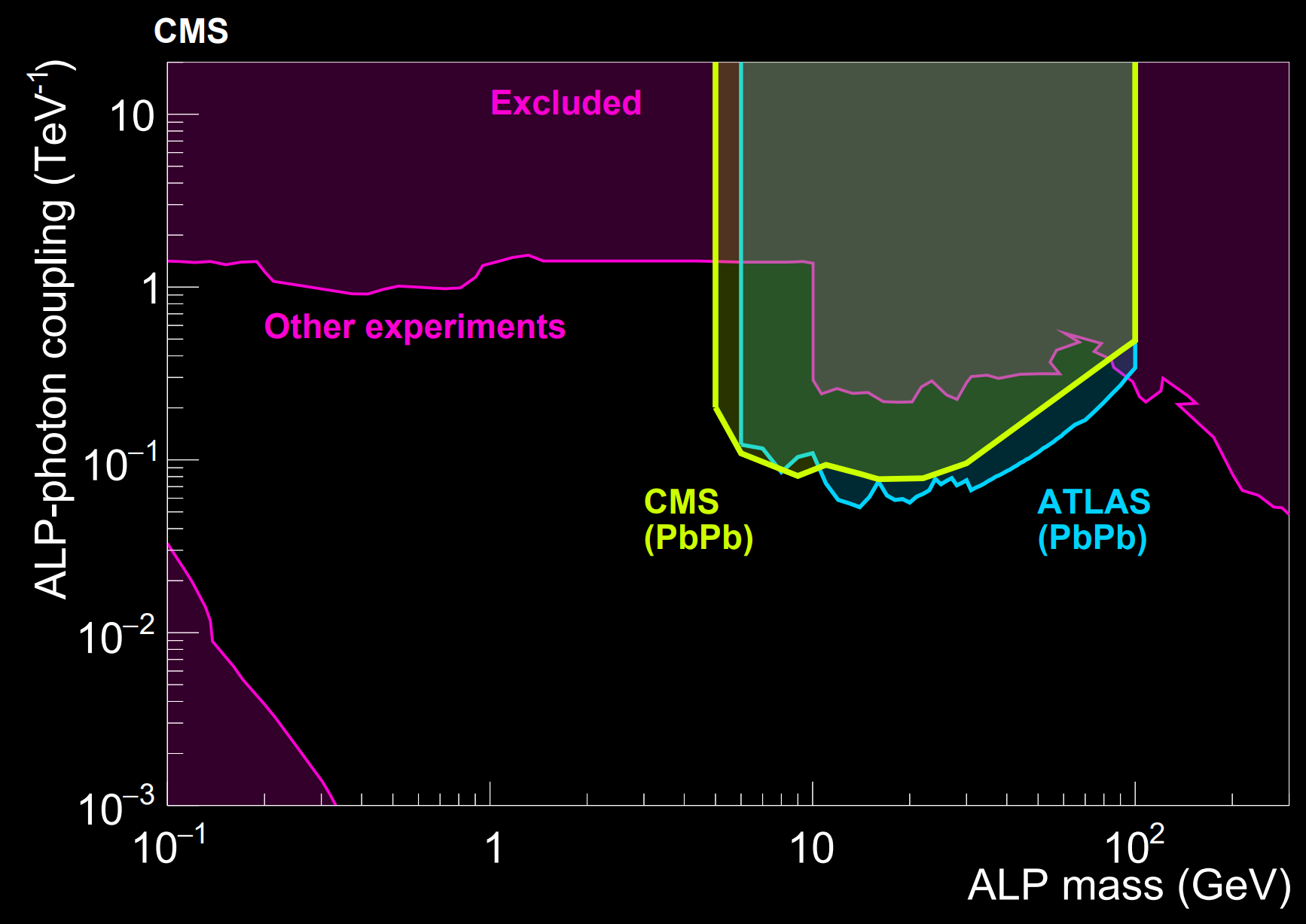
CMS scientists discover some of the rarest collisions that the LHC can produce – such as the scattering of light by light – and learn more about the quantum nature of electromagnetism, search for new particles, and much more.
In everyday life, if we cross two beams of light, the photons will simply go through each other without interacting. However, the quantum description of light predicts that in very rare cases, photons can interact by creating intermediate charged particles that annihilate back to two photons. These extremely rare elastic light collisions were predicted by the founders of quantum physics, like Enrico Fermi, and further worked out when Richard Feynman and many others developed the quantum theory of electromagnetism (QED) that eventually led to the standard model of particle physics we know and love today.
Physicists call these extremely rare collisions light-by-light scattering. Finding and studying these elastic light collisions is interesting because it allows testing the quantum behaviour of light at the very high LHC energies, as well as searching for new physics phenomena that could change the probability for such a process to occur.
Many extremely rare things must happen simultaneously to scatter light off light. When charged particles move fast in an accelerator like the LHC, they can emit photons without breaking up, which is rare. The emission of these photons is millions of times more frequent for lead ions than for protons, making it worthwhile to use the LHC lead ion collision data to search for light-by-light scattering. Having those photon emissions happen with two lead ions coming close to each other but without touching and breaking apart is again very rare, and finally, the chance that the two photons bounce off each other is also extremely small.

Above: graphical representation of the different steps in the selection of light-by-light collisions, rejecting the charged (blue) and neutral (yellow) background until only photons consistent with light-by-light collisions (pink) are left.
To make things more challenging, other types of collisions can look similar, resulting in two photons observed in the detector but coming from processes other than light-by-light scattering. Fortunately, QED is a very precise theory, and it predicts that the two photons from light-by-light scattering will be almost exactly emitted back-to-back. From the angles between the photons measured in the CMS experiment, it is possible to disentangle different kinds of LHC photon collisions and isolate light-by-light scattering.
Learning how to measure light-by-light scattering also has an interesting physics byproduct. By using the same technique with only minor changes, the creation of an electron-positron pair from the scattering of two light rays can also be observed. This so-called Breit-Wheeler process is a thousand times more likely to occur. Studying these collisions gives another way to precisely test QED, confirming that the measurement is consistent with the Standard Model predictions.
In a recent result, CMS physicists have isolated 26 PbPb collisions at the LHC that are consistent with light-by-light scattering. In comparison, there should only be 12 background collisions out of the billions and billions of LHC collisions. The chance that all 26 collisions are background is extremely small, less than 1 in 10 million, and above the standard particle physics threshold for the discovery of five standard deviations. The ATLAS collaboration also observed light-by-light scattering a few years ago, and CMS now confirms that this process is indeed possible at colliders. Because the calorimeter of the CMS experiment is particularly good at seeing photons at low energies, this measurement is complementary and gives more information for those collisions.
As a bonus, even with the modest number of light-by-light scattering candidates, we can search for undiscovered particles that interact (almost) only with photons - the observed number gives information on which particles can exist. Among such new possible particles, the CMS measurement is sensitive to the existence of axion-like particles (ALPs), and sets limits on their masses and photon couplings in a range not accessible by any previous experiment.

Above: A region of masses and strength of interaction with photons in which CMS would have seen axion-like particles, had they existed, compared with the reach of other experiments.
Currently, the number of light-by-light scattering collisions is still very small. This means larger datasets could help CMS physicists study this intriguing electromagnetic phenomenon better because we will have more collisions to study. Furthermore, given the fact that we only observe 26 collisions in the signal region, each marginal enhancement plays a crucial role in refining our analyses. However, to be successful, it is also essential to have a really good detector, as the busy LHC collisions will eventually affect the CMS electromagnetic calorimeter to the point that this measurement would be difficult. A new high-granularity calorimeter promises to improve the performance of the CMS detector during the high-luminosity data-taking era of the LHC so that we can keep studying and improving our understanding of fascinating phenomena such as light-by-light scattering.
Written by: Jeremi Niedziela, for the CMS Collaboration
Edited by: Muhammad Ansar Iqbal
Read more about these results:
-
CMS Physics Analysis Summary (HIN-21-015): " Measurements of the light-by-light scattering and the Breit-Wheeler processes, and searches for axion-like particles in ultraperipheral PbPb collisions at 5.02 TeV"
-
@CMSExperiment on social media: Bluesky - Facebook - Instagram - LinkedIn - TikTok - Twitter/X - YouTube

